11 Bulbs You Should Plant Now for a Stunning Spring Display
Planting bulbs in the fall is a great way to prepare your garden for a stunning spring display. These easy-to-grow flowers bring vibrant colors, beautiful fragrances, and early-season blooms, transforming your landscape as the weather warms up. Whether you’re looking for bold blooms or delicate early risers, these bulbs will provide the perfect touch of beauty to your outdoor space. With the right care, they will return year after year, offering long-lasting enjoyment.
This post may contain affiliate links, which helps keep this content free. Please read our disclosure for more info.
Tulips

Tulips are iconic spring flowers that are available in a vast array of colors and shapes, making them a must-have for any spring garden. From vibrant reds to soft pastels, tulips bring both color and elegance to your landscape. These bulbs are planted in the fall and, with proper care, will bloom in early to mid-spring, making them one of the earliest signs of warmer weather. Tulips thrive in well-drained soil and need a cold period in winter to ensure they bloom successfully in spring. Their tall, sturdy stems and bright blooms create a striking contrast against other plants in your garden.
When planting tulips, it is important to space them properly to allow their flowers to open fully. Tulips look particularly beautiful when planted in groups or rows, creating a visual impact that stands out in garden beds or along walkways. Additionally, they are versatile enough to be grown in containers, making them an ideal choice for patios or balconies. Their vibrant petals will emerge as the weather warms up, making them perfect for creating colorful flower arrangements to bring the beauty of spring indoors.
Daffodils

Daffodils, often referred to as “Narcissus,” are another early bloomer that heralds the arrival of spring. These hardy bulbs are typically one of the first to emerge from the ground, sometimes even poking through the snow in late winter or early spring. Their signature trumpet-shaped flowers come in a variety of colors, including bright yellow, white, and orange, adding a sunny touch to any garden or landscape. Daffodils are low-maintenance and perennial, meaning they will return year after year, often multiplying in number, creating an even larger display of blooms as time goes on.
Daffodils thrive in well-drained, slightly acidic soil, and they are ideal for planting in areas with partial or full sunlight. Once planted, they require minimal care, making them perfect for both beginner gardeners and seasoned professionals. As they bloom, their cheerful flowers lift the spirits of any gardener, offering a reminder that spring is on its way. Whether planted in groups for a bold statement or scattered throughout a garden bed, daffodils will provide months of enjoyment with their bright, eye-catching flowers.
Crocus

Crocus bulbs are one of the earliest signs of spring, often blooming as early as February, before most other plants have begun to grow. These small, yet striking flowers come in a variety of colors, including purple, yellow, and white, and can be planted in both garden beds and containers. Crocuses are ideal for creating a vibrant display of color, especially during the late winter or early spring months when the garden may otherwise seem dull. They prefer well-drained, fertile soil and can grow in full sun or partial shade.
One of the most appealing aspects of crocus is its ability to bloom while the weather is still cool, making it a perfect early-season flower. Planting them now ensures they will begin to bloom as the days lengthen and temperatures rise, creating a beautiful and welcoming sight. Crocus bulbs are also excellent for naturalizing in lawns, where they can grow in clusters and form a stunning carpet of color across your yard. These low-maintenance bulbs are a great choice for gardeners looking to add early-season color without requiring too much effort.
Hyacinths
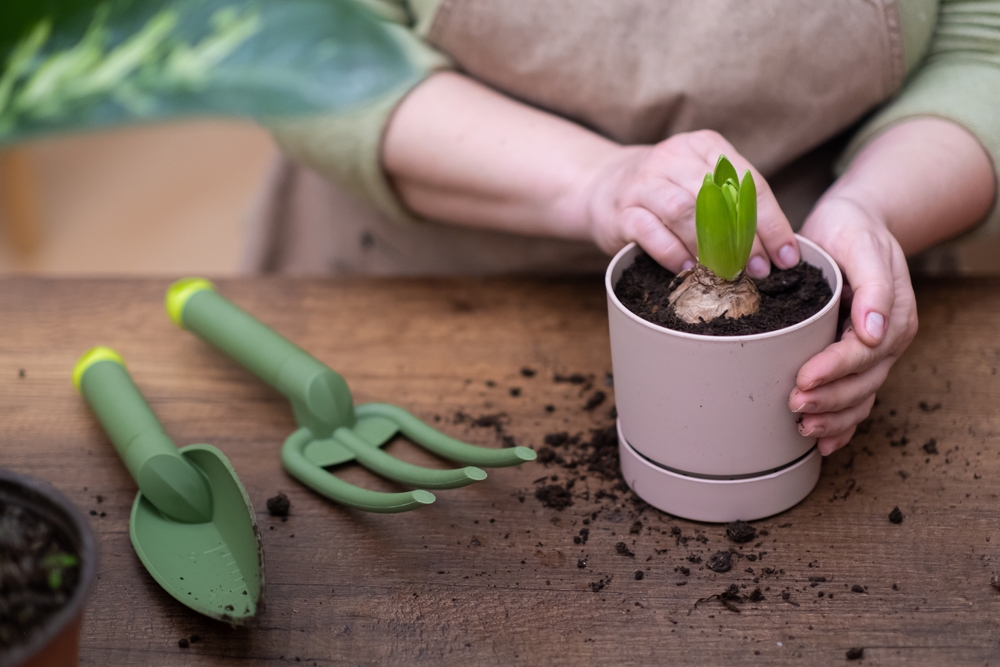
Hyacinths are known for their intense fragrance and striking blooms that add a pop of color to any spring garden. Their flowers come in a variety of hues, including pink, blue, purple, white, and red, and they are typically planted in the fall for a spring display. Hyacinths produce dense flower clusters on sturdy stems, making them a dramatic addition to any landscape. Their sweet, floral fragrance is particularly lovely when planted near walkways or garden paths, where it can be appreciated by anyone passing by.
These bulbs prefer well-drained, slightly acidic soil and thrive in areas with full sunlight or light shade. When planting hyacinths, it is important to space them out properly to allow the flowers to open fully. While hyacinths bloom in early to mid-spring, they remain an enduring favorite due to their vibrant colors and delightful scent. These flowers can also be grown in containers, making them an excellent choice for patios or balconies where space is limited.
Snowdrops
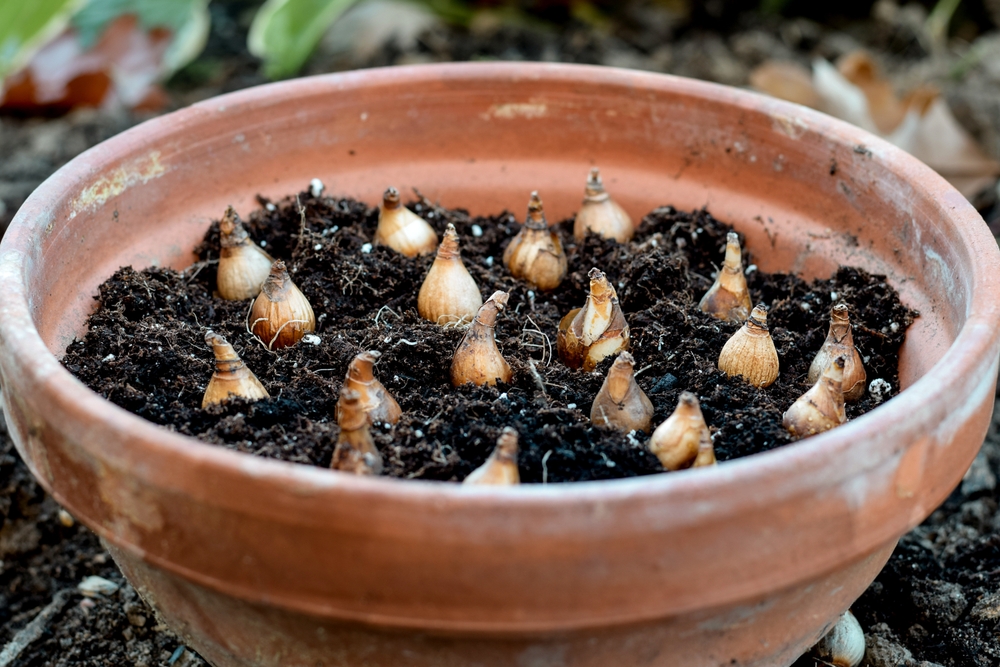
Snowdrops are among the most charming and earliest spring flowers, often blooming in late winter or early spring, sometimes even peeking through the snow. These delicate white flowers, which resemble teardrops, create a peaceful and serene atmosphere in any garden. Snowdrops are perfect for naturalizing in woodlands, under trees, or in shaded areas where other flowers might not thrive. They are well-suited for cold climates and can handle frost, making them a reliable choice for gardeners in regions with long winters.
Planting snowdrop bulbs now will allow you to enjoy their early spring blooms that provide much-needed color after the long winter months. These flowers are often among the first to announce the arrival of spring, making them a delightful and uplifting sight. Snowdrops are hardy and low-maintenance, and they multiply over time, providing an increasingly larger display of white blooms year after year. Their early appearance and simple beauty make them a must-have in any garden.
Alliums
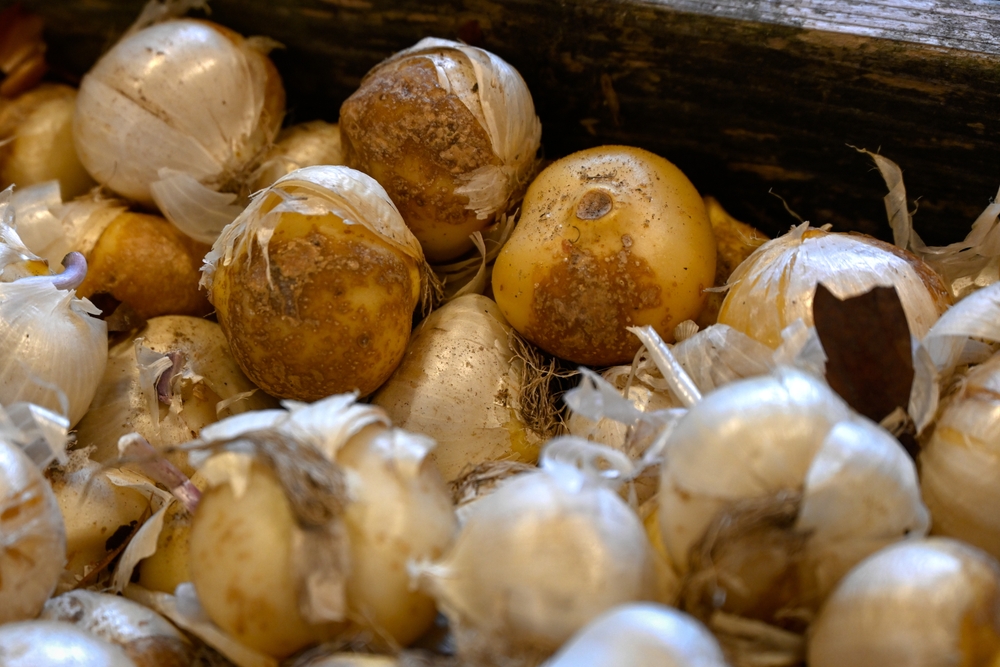
Alliums, also known as ornamental onions, are a unique addition to any spring garden, known for their large, globe-shaped clusters of tiny flowers. These bulbs come in shades of purple, pink, white, and blue, and they bloom in late spring to early summer. Alliums are a great way to add height and structure to your garden, as they produce tall, slender stems that can reach up to 3 feet in height, topped with a large, round cluster of flowers. Their unique appearance and bold colors make them a standout feature in flower beds or borders.
Planting alliums now ensures they will add a dramatic flair to your garden in the late spring months. They thrive in full sunlight and well-drained, fertile soil, and they are relatively easy to grow. Alliums are also drought-tolerant once established, making them a great option for low-maintenance gardens. Whether planted in groups for a bold effect or as accents among other flowers, these bulbs will provide a stunning visual display in your spring garden.
Fritillaria
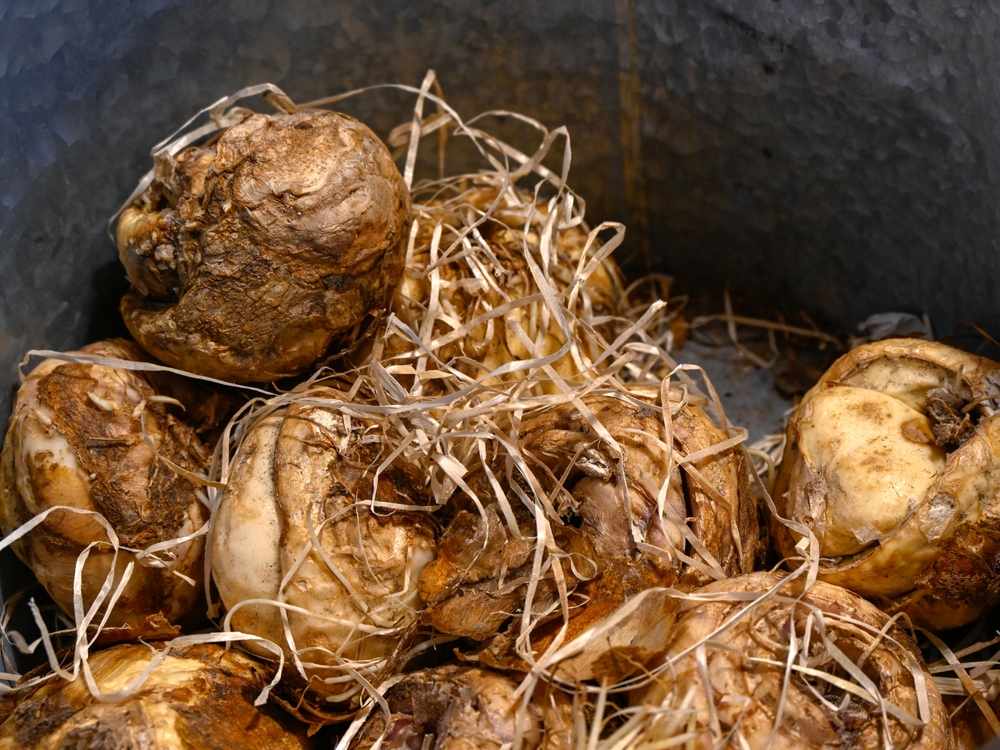
Fritillaria, also known as snake’s head fritillary, is a striking and unique bulb that produces bell-shaped flowers with an intricate checkered pattern. These unusual blooms are typically purple or white, and their distinctive appearance makes them a conversation starter in any garden. Fritillaria bulbs prefer well-drained soil and a sunny or partially shaded location, and they bloom in early spring, adding a touch of elegance to any garden bed or border. The flowers dangle gracefully from tall stems, creating an air of sophistication and charm.
Planting fritillaria bulbs now will ensure that their delicate, patterned flowers will add interest and beauty to your spring display. These bulbs are best planted in groups or clusters to highlight their unique appearance. Once established, fritillarias will return year after year, providing a stunning focal point in your garden. Their striking appearance, paired with the early spring bloom time, makes them a perfect addition to any garden looking to create a distinct and memorable spring display.
Camas

Camas bulbs, known for their delicate blue and purple star-shaped flowers, are a beautiful addition to any garden. These bulbs are native to North America and thrive in moist, well-drained soil with plenty of sunlight. While they are often associated with wildflower meadows, camas can also be planted in your home garden to add a touch of elegance. Camas bloom in late spring, typically in May or June, and their unique flowers will bring a soft pop of color to your landscape.
Planting camas bulbs now ensures that their delicate blooms will appear when other flowers are still taking their time to open. Their low-maintenance nature makes them a great choice for gardeners looking for an easy-to-care-for bulb that still provides stunning results. Camas bulbs are also perfect for naturalizing in areas like wildflower meadows, adding beauty without requiring constant attention. These bulbs will reward you with their vibrant flowers each spring, multiplying year after year.
Ranunculus

Ranunculus, with its multi-petaled flowers in shades of pink, red, orange, and yellow, is one of the most eye-catching bulbs for a spring display. Known for their lush, ruffled blooms, these flowers bring a feeling of romance to your garden. Ranunculus bulbs prefer well-drained, fertile soil and full sunlight, thriving when planted in the fall and blooming in late spring. Their vibrant, tightly packed petals resemble roses, making them a stunning addition to flower beds, containers, or bouquets.
These bulbs can be planted now for a rich and colorful display in the spring months. Ranunculus flowers are often used in floral arrangements, making them a great choice for gardeners who want to enjoy their beauty both in the garden and inside their homes. They are best planted in clusters to maximize their visual impact, creating a lively and colorful garden spot. When planted in well-prepared soil and given enough sunlight, ranunculus bulbs will reward you with an abundant bloom that is hard to miss.
Scilla
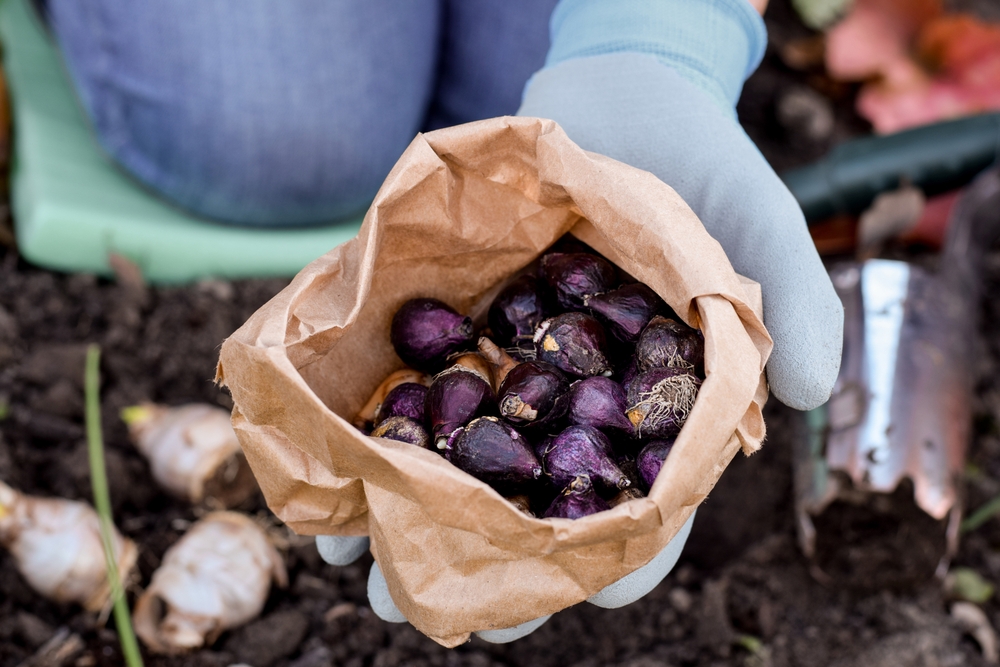
Scilla, or squill, is a charming and hardy bulb that produces clusters of small, star-shaped flowers in shades of blue, purple, and white. These bulbs are known for their ability to bloom early in the spring, sometimes even while the ground is still cold. Scilla thrives in well-drained soil and partial to full sun, making them perfect for planting along the edges of garden beds or in naturalized areas like woodlands. These small yet striking flowers are ideal for filling in gaps between other plants or creating a beautiful carpet of color.
Scilla bulbs should be planted now for a reliable spring show of color. These hardy flowers will often bloom before other plants, helping to fill the gap when the garden is still emerging from winter dormancy. Scilla bulbs are great for planting in groups, where they can create a stunning effect as their small clusters of flowers appear in waves. Whether planted in containers or garden beds, these bulbs are perfect for a charming spring display.
Iris

Iris bulbs are a long-time favorite among gardeners, known for their striking, sword-like leaves and intricate flowers. Irises come in a wide range of colors, including purples, blues, whites, and yellows, and they bloom in late spring to early summer. These flowers are especially popular in perennial gardens due to their hardiness and longevity, often returning year after year with minimal care. Irises thrive in full sun and well-drained soil, making them perfect for borders, garden beds, or as part of a mixed perennial garden.
By planting iris bulbs now, you can look forward to their beautiful blooms in the late spring, providing an elegant and colorful display. The flowers are often large and showy, with ruffled petals and intricate patterns that draw attention. Irises also have the added benefit of multiplying over time, so you can expect your initial planting to grow into a more substantial cluster of blooms in the years to come. These low-maintenance bulbs will reward you with their beauty and longevity in any sunny garden spot.
This article originally appeared on Avocadu.
